Like last year, some of our best-performing blog posts focused on air sealing and proper installation and application of fiberglass and mineral wool insulation, which is no surprise, since we’re the Insulation Institute. However, other topics like energy efficiency design trends and the prioritization of energy efficiency over energy generation ranked highly as well.
Details »Insulation Institute Blog
Posts Categorized: Energy Efficiency
The Housing Guy Talks Zero Energy’s Expansion
In the past three months, Sam Rashkin, chief architect of the U.S. Department of Energy’s Building Technologies Office, has been traveling non-stop, speaking at meetings and conferences about the expansion of zero energy buildings in the United States. While accustomed to an exacting traveling and speaking schedule, the demands on his time likely accelerated with word that Rashkin will retire from the DOE and his role as chief housing-efficiency advocate at the end of the year. Insulation Institute recently caught up with Rashkin for an assessment on zero energy building today and where it’s headed in the future.
Details »Energy Efficiency Workforce Grows to 2.3 Million
E4TheFuture’s recently released 2019 report, “Energy Efficiency Jobs in America,” demonstrates the impressive growth of the energy efficiency workforce, which now numbers more than 2.3 million people. The annual report is based on data from the U.S. Bureau of Labor Statistics and is a comprehensive survey of thousands of businesses, using a methodology developed for the U.S. Department of Energy.
Details »Bentley’s 4 Rules for High-Performance Homes
Jeff Bentley is a fifth-generation home builder who’s built more than 4,000 houses and sold more than 2,000 homes in more than 45 years in residential construction. He’s also a HERS rater, LEED Green Builder and REALTOR® whose counsel on energy-efficient home building is highly sought after. Insulation Institute reached out to Bentley to find out what practices can help builders meet more stringent energy efficiency code requirements and dramatically improve the way homes are built in America. Here are Bentley’s four rules for High-performance Homes.
Details »A Model for the Net Zero Built Environment
New York State Energy Research and Development Authority (NYSERDA) has some of the most advanced policies and programs in the country to support a net zero built environment for existing and new construction homes. Other states would do well to follow their lead.
Details »The Case for Energy-Plus-Health Programs
Transformations taking place in both the home energy efficiency arena and healthcare are coming together in ways that present opportunities for these industries to work collaboratively to improve outcomes for customers. VEIC, a sustainable energy company with a mission to enhance the environmental and societal benefits of clean and efficient energy use for all people, is out with a new Energy-Plus-Health Playbook. The playbook examines a three-tiered approach to targeting unhealthy and substandard existing housing conditions that cause energy burdens and compromise the household health of low- and middle-income customers.
Details »You Have One Job: Insulation or Air Sealing
One of the best ways to keep informed of building industry trends and learn insights from industry experts is reading blogs and publications. However, sometimes, these sources can leave readers confused about the fundamentals of building science, the performance of building products, and ultimately, share misleading information. Frequently, writers conflate the role of insulation and air sealing, so it’s important to examine the difference.
Details »Do Realtors Get “Sustainable” Construction?
Green or sustainable construction is estimated to make up one-third of single-family and multifamily home construction, and that number will likely increase to roughly 50 percent by 2022.[1] Such energy-efficient homes are in high demand among buyers because they are less costly to own, more comfortable, and generally command a higher resale value than standard code-built homes.[2] Real estate professionals who are knowledgeable about sustainable or energy-efficient features in homes can be a source of education and information for potential buyers, but their knowledge of such features and their impact varies. A new report from the National Association of Realtors® looks at realtors’ knowledge of sustainability in the industry and provides insights into the extent to which green features appeal to buyers.
Details »Building Envelope Efficiency Without Compromise
Which is the more cost-effective method of reaching energy code requirements, saving energy or generating it with solar panels on-site? According to a new report, the answer is clear.
Details »Designers Report on Energy Efficiency Trends
Fixr.com recently published its 2019 Energy-Efficient Home Design Trends Report. The study’s authors interviewed 25 experts in the home design industry to peg upcoming trends in energy-efficient home features, design, and building trends. These experts have a pulse on what consumers want in design but are also savvy about energy efficiency and its importance to home buyers.
Details »









